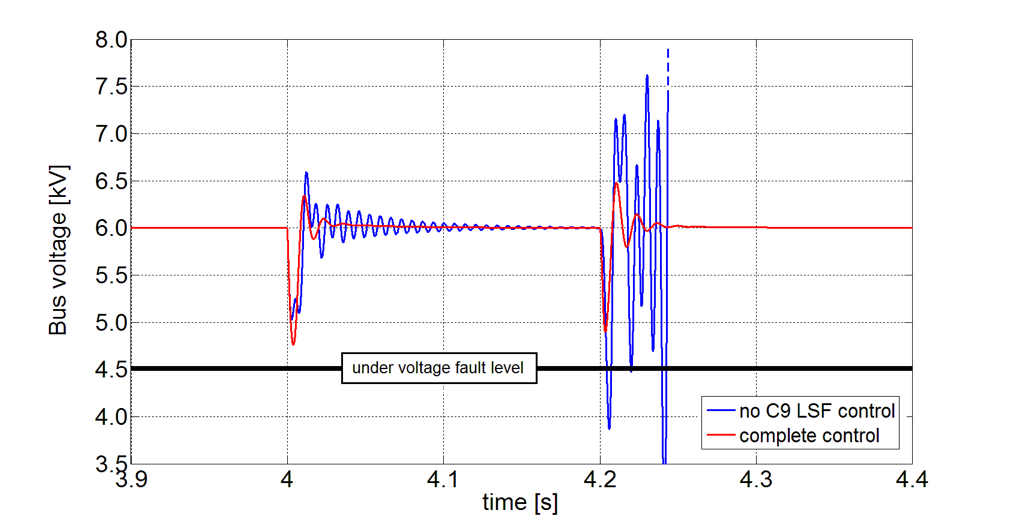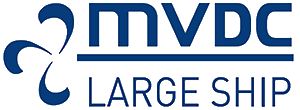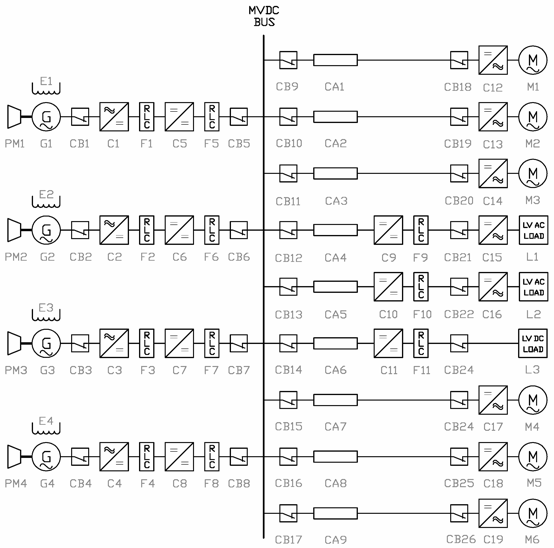Voltage control and stability
Power quality is a key issue in Medium Voltage Direct Current (MVDC) power systems, where electrical variables must match the quality requirements. Unlike the Medium Voltage Alternating Current power systems, the utilization of DC allows to neglect the frequency control (as the fundamental frequency is zero) and thus the harmonic distortion principle is not applied.
Voltage control is however of paramount importance in shipboard MVDC power systems. In this regard, the difficulty in guaranteeing the voltage requirement is due to the widespread presence of power converters, which are generally regulated by large bandwidth controls. The presence of such controls may determine unwanted dynamic interactions between subsystems and dangerous instabilities to compromise the power quality.
This is the reason why the stability is the most important study in the voltage control design. As said, this fundamental requirement is hardly satisfied in MVDC power system: in effect high bandwidth control of power converters (that are modeled by Constant Power Loads, CPLs) may cause voltage instabilities in presence of perturbation, even a black-out in case of connection of a relevant CPL.
The CPL stability issue may be faced by an innovative approach, based on the employment of generating systems as sources of stabilizing power. These generating systems are controlled to properly apply two different techniques, namely Active Damping (AD) and Linearization via State Feedback (LSF). In spite of what proposed by literature (stability might be locally solved by a specific control for each load converter), this generating systems solution allows the use of standard power converters for the on-board load’ supply. This approach assures important advantages, like lower costs for purchasing, management and maintenance.

Bus voltage transient in presence of a disturbance: the linearizing control action (LSF) to maintain the voltage stability.
The Active Damping is a basic technique, simply implemented on digital controllers. This method is aimed at transiently (virtually) increasing the physical resistances of the power system, determining a positive damping factor for the entire power system, thus making tolerable the connection of small CPLs. Whereas the efficient LSF technique realizes the CPLs non-linearities cancellation (causes of voltage instability), ensuring voltage stability in critical cases, such as those characterized by large CPLs and poorly damped power system.
AD and LSF techniques have been utilized to realize two multi-machine control strategies, which are tested and validated by means of numerical simulations in time domain. A comparison between the two strategies may be achieved by observing the transients (voltages, currents and powers), highlighting pros and cons. With reference to the last point, the project has proposed some solutions to overcome possible critical conditions.
It is important to notice the common procedure to design the filter capacitance, which are commonly chosen in order to guarantee a suitable voltage quality, measurable by the voltage ripple (ripple ΔV%<5% according to Standard). Talking about CPL issue, it is possible to solve the instability by implementing the “power system solution” (employment of large filter capacitances), thus avoiding the exploitation of particular control techniques. However, this solution appears unreasonable and uneconomic, being based on an actual over-sizing approach: in effect, the “power system solution” is used to install capacitances more than fivefold the capacitances of the “control technique solution”.
Therefore, the voltage control techniques developed in the MVDC Large Ship project are capable in overtaking the “power system solution”, offering important advantages:
- Economical savings, being the stability guaranteed in presence of filters designed by standard ripple requisites.
- Space savings, being the capacitor designed by avoiding the over-sizing procedure (capacitors have a capacitance equal to 1/5 the over-sized capacitance).
- Short-circuit limitation, being the current dependent on limited capacitor size.
- Fire risk reduction, being limited the total capacitance installed.
MVDC Large Ship – Sistema elettrico integrato con distribuzione in media tensione a corrente continua per grandi navi a propulsione elettrica, è un progetto cofinanziato dal POR FESR 2007-2013 Regione Friuli Venezia Giulia, Asse 1, Attività 1.1b.









